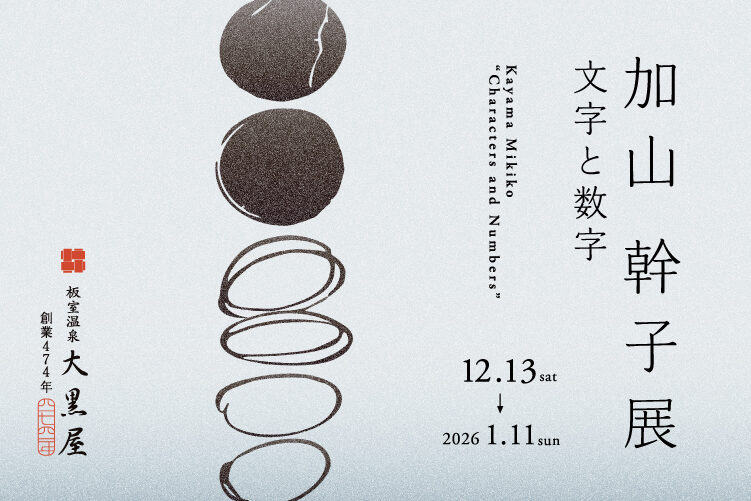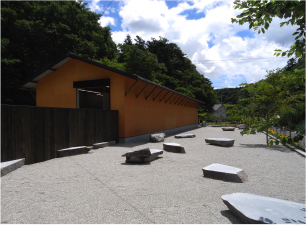
Kayama Mikiko -Characters and Numbers-
Based in Kyoto, calligrapher Kayama creates works that move beyond the traditional boundaries of calligraphy, combining a contemporary sensibility with her own distinctive aesthetic. Her bold strokes are imbued with both elegance and a masterful use of space, while the words she chooses carry a light-hearted perspective that gently brings a smile.

KISHIO SUGA SOUKO MUSEUM
Souko Museum is a permanent exhibition space devoted to Kishio Suga’s work.
We offer guided tours each morning, visiting the Souko Museum and 5 gardens designed by Suga for his installations and sculpture.
- CONTEMPORARY ART AND DAIKOKUYA
-
Daikokuya was one of the first traditional Japanese ryokans to incorporate contemporary art into its interior and surroundings. At Daikokuya, we believe that encounters with art can enhance everyday life. We invite you to leave behind your worries and reestablish a connection with your mind and body at Daikokuya, in a beautiful balance of nature and art.